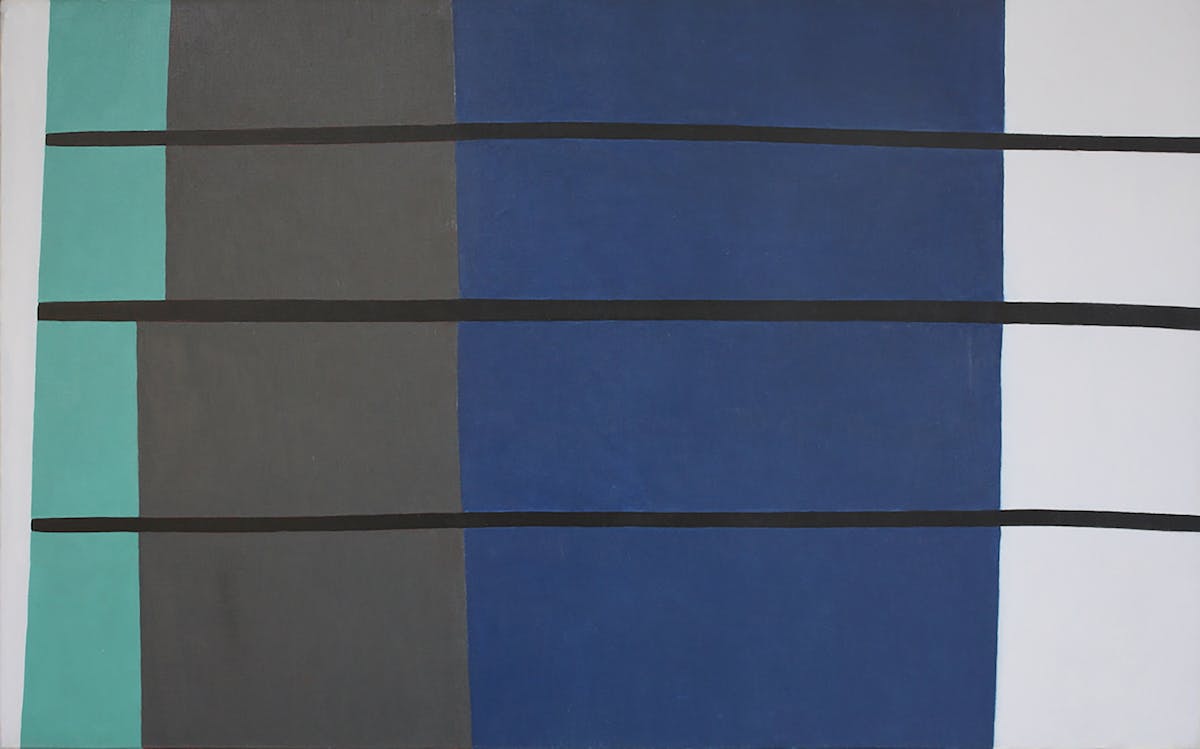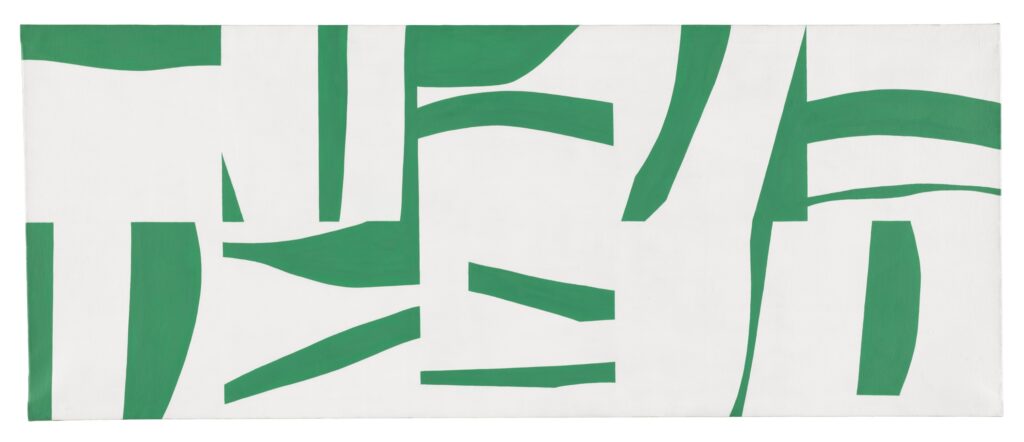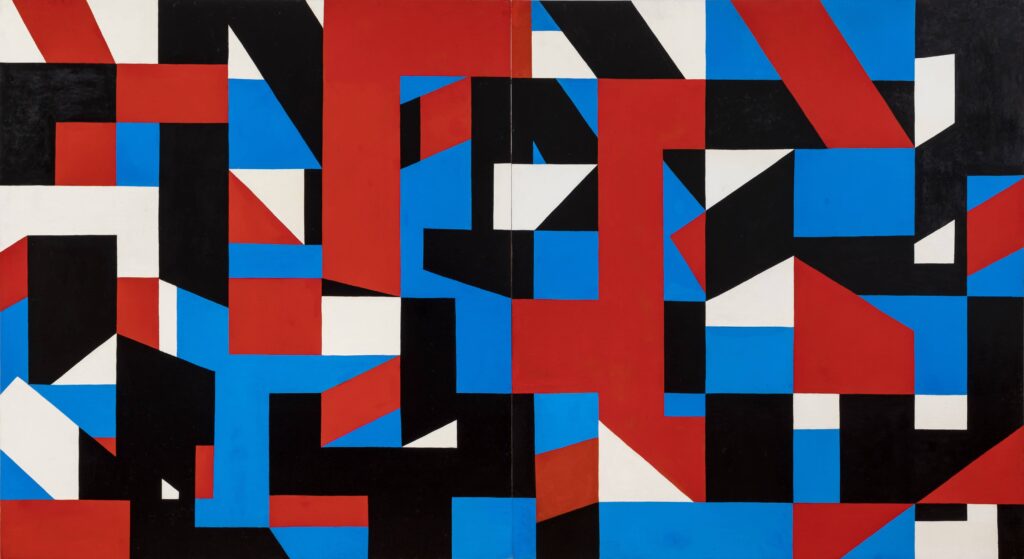A Tale of Two Cities Gives Paris Its Due in the History of Postwar Painting
If this show proves anything, it is that New York and the French capital are artistic and cultural half siblings.

‘Americans in Paris: Artists Working in Postwar France, 1946–1962’
The Grey Art Museum, New York University, 18 Cooper Square, New York, NY
Through July 20, 2024
An inaugural show at New York University’s Grey Art Museum is challenging, or at least diversifying, the longtime consensus that places New York City at the center of postwar painting.
Pollock, De Kooning, Kline, Rothko, and Mitchell — the giants who occupy the mid-century collection of the Museum of Modern Art — come immediately to mind in the standard narrative of Gotham as the mecca of postwar painting.
“Americans in Paris: Artists Working in Postwar France,” though, is a survey exhibition of American artists who opted out of the eye of the art cyclone that was 1950’s Manhattan and headed out to the city of light instead.
Opening at its new location at 18 Cooper Square, this Grey Museum show proposes to broaden the story of American post war painting with its impressive collection of over 70 American expat Parisian artists. The result of 6 years of curatorial research, the current show fills out a missing and vital dimension of postwar painting history.
The show is densely populated with work, laid out salon-style in a historical nod to its participants. Postwar artistic Paris was a lively and convivial community and group shows were apparently frequent. At first glance, we can see that many of the same concerns that obsessed New York painters were ongoing there as well, albeit with a different, softer focus.

Immediately apparent is a general concern with the problems of gestural abstraction, color field and the more linear and geometric styles of abstraction championed by Josef Albers, Piet Mondrian, and the Bauhaus school.
In some works such as the stunning “Panneau” by Jack Youngerman, the strong formal influence of European modernism is unmistakable. It is, by ironic coincidence, quite compositionally similar to Alber’s most famous work in New York City, the recently restored “Manhattan” mural inside the Met Life Building.
The show is also of historical interest in that it fills out biographical gaps in the careers of artists who would later make their mark here. Ellsworth Kelly, for example, known as the progenitor of hard edged painting, was a vital part of the Parisian post war community. Viewing his work from this period, such as the green and white “Talmont,” painted in 1951, you can see that Kelly’s sublimely clean lined aesthetic owes a great deal, like Youngerman, to the European school.
We also get to witness artists at the very early stages of their development, doing things you would not expect. I was surprised to come across Leon Gollub’s amorphous “Head II.” It has none of the visceral rage of his later paintings, devoted as they are to grubby paramilitary agents committing atrocities in the name of Realpolitik. It does, though, have a singular haunting quality, steeped as it is in European influence. Something malevolent is brewing beneath the surface.
We also see an early side of Shirley Jaffe, who would eventually migrate to New York and influence a generation of artists with her bright, linear and geometric style. Except in her Parisian incarnation, she is deeply engaged in a lyrical if not mystical abstract expressionism closer to Kandinsky. It is always fascinating to observe how artists grow and change.

If this show proves anything, however, it is that New York and Paris are artistic and cultural half siblings. There are, obviously, deep cultural resonances between the two cities. Jazz, already beloved in New York, was probably even more prominent in Paris at this time, given that it was a largely racism-free enclave for many African American jazz artists. Shinkiji Tajiri’s whimsical 1953 Dadaist sculpture, which appears to be a cross between a trumpet and a shower nozzle, pays homage to Billie Holiday. It lauds the singer and the art form even as it seems to foretell her demise.
Opinions may differ as to what precisely separates the Parisian art in this show from that of its historic New York counterparts. Paris has always been the perennially intellectual and artistic capital, but with a marked distaste for the nakedly commercial. It is a city of detached purists, more enamored by pursuit of the idea than the allure of success.
While New York painting of the 1950’s and 60’s had a decidedly macho, if not boosterish character, the Americans in this Parisian show seem content to be softer. They show no desire to explode off the canvas and re-invent the medium. There is, rather, a European level of restraint, an organic subtlety in some of the work, that one does not see in the bold experimentation of the New York School.
Witness the utter lucidity and lyricism of Robert Breer’s “Composition En Trois Lignes,” which radiates a quiet refinement unmatched elsewhere at the time. It’s the sort of practiced and airy simplicity one might glean from life in a city that has given itself over to the art of living rather than the art of mythmaking.

